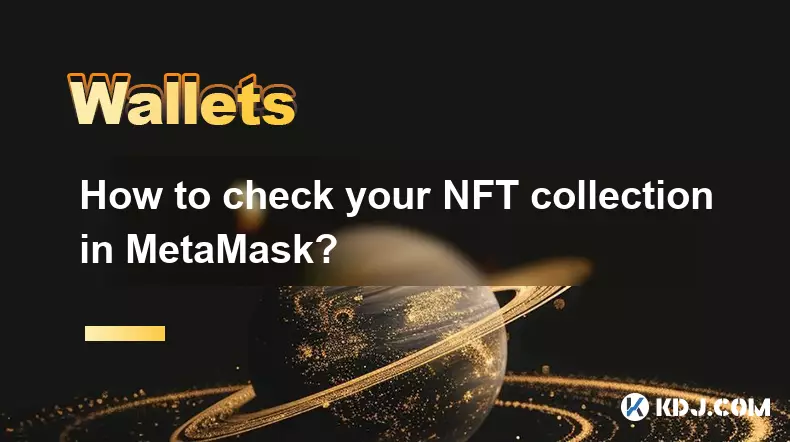-
 bitcoin
bitcoin $100977.009184 USD
-2.05% -
 ethereum
ethereum $3282.009150 USD
-3.23% -
 tether
tether $0.999813 USD
-0.02% -
 xrp
xrp $2.208254 USD
-4.89% -
 bnb
bnb $951.411089 USD
0.55% -
 solana
solana $155.761205 USD
-2.84% -
 usd-coin
usd-coin $1.000217 USD
0.02% -
 tron
tron $0.284475 USD
-1.28% -
 dogecoin
dogecoin $0.162363 USD
-1.53% -
 cardano
cardano $0.533988 USD
-0.47% -
 hyperliquid
hyperliquid $39.174339 USD
-3.22% -
 chainlink
chainlink $14.724828 USD
-1.16% -
 bitcoin-cash
bitcoin-cash $477.297986 USD
-1.28% -
 zcash
zcash $554.227426 USD
17.30% -
 ethena-usde
ethena-usde $0.998995 USD
-0.03%
Seed Phrase Security: The Do's and Don'ts of Protecting Your Recovery Phrase
Your seed phrase is the ultimate key to your crypto—never share it, store it digitally, or trust anyone claiming to help; one mistake can lead to total loss.
Nov 03, 2025 at 05:37 am

Understanding the Importance of Seed Phrase Security
1. A seed phrase, also known as a recovery phrase, is a set of 12 to 24 words that grants full access to a cryptocurrency wallet. This sequence acts as the master key to all digital assets stored within. Losing it or having it compromised can result in irreversible loss of funds.
2. Unlike traditional financial systems, there is no customer support or password reset option in decentralized blockchain networks. If someone gains access to your seed phrase, they can drain your wallet without leaving a trace. The responsibility of safeguarding this information lies entirely with the user.
3. The seed phrase must never be shared with anyone, under any circumstances. Even individuals claiming to offer technical assistance should not be trusted with this data. Scammers often pose as support agents to trick users into revealing their phrases.
4. Storing the seed phrase digitally—such as in emails, cloud storage, or text files—is extremely risky. Devices can be hacked, and online accounts breached. Once exposed, the private keys derived from the seed phrase are vulnerable to exploitation.
5. Physical theft is another threat. Writing the phrase on paper may seem secure, but paper can degrade, burn, or be found by others. Proper physical protection methods must be employed to ensure longevity and discretion.
Best Practices for Securing Your Recovery Phrase
1. Use a metal or steel backup solution designed specifically for seed phrases. These materials resist fire, water, and physical wear, offering durability far beyond paper. Engraved or stamped metal plates prevent ink fading and tearing.
2. Store multiple copies in geographically separate locations. For example, one copy could be kept in a home safe, another at a trusted family member’s house, and a third in a secure deposit box. This reduces the risk of total loss due to localized disasters like fires or floods.
3. Avoid taking photos or scanning the seed phrase. Digital images, even if saved locally, increase exposure to malware and unauthorized access. Smartphones are common targets for spyware capable of extracting sensitive data.
4. Never input your seed phrase into any website or software application. Legitimate wallet providers will never ask for it. Fake phishing sites mimic official interfaces to steal credentials, and entering the phrase anywhere online is equivalent to handing over control of your wallet.
5. Consider using a passphrase (also known as a 25th word) in addition to the standard seed phrase. This adds an extra layer of security through optional encryption, creating a hidden wallet only accessible when both the seed and passphrase are provided.
Avoiding Common Mistakes with Seed Phrases
1. Do not store your seed phrase on a device connected to the internet. Computers, smartphones, and tablets are susceptible to hacking. Keyloggers and screen capture tools can record inputs and screenshots without the user’s knowledge.
2. Refrain from writing down the seed phrase in plain sight. Sticky notes, notebooks, or drawers easily accessible to guests, cleaners, or roommates present serious risks. Discretion is essential when handling such sensitive information.
3. Never share your seed phrase via messaging apps, email, or social media. These platforms are monitored, archived, and potentially compromised. End-to-end encryption does not guarantee safety against device-level breaches.
4. Avoid using mnemonic tricks or altering the word order to 'remember' the phrase. Any deviation renders the recovery process useless. The exact sequence, spelling, and order must be preserved without modification.
5. Do not rely solely on memory. Human memory is fallible, especially under stress or over time. Without a reliable physical or durable backup, the chance of permanent asset loss increases dramatically.
Frequently Asked Questions
What happens if I lose my seed phrase?Without the seed phrase, you cannot recover access to your wallet. Most wallets do not have alternative recovery methods. If the phrase is lost and no backup exists, the funds are effectively locked forever.
Can I change my seed phrase?No, the seed phrase is generated once during wallet creation and cannot be changed. To create a new phrase, you must generate a new wallet and transfer your assets to it securely.
Is it safe to use a hardware wallet for storing seed phrases?Hardware wallets do not store the seed phrase externally; they generate and keep it internally in a secure element. You are still responsible for writing down and protecting the initial recovery phrase provided during setup.
Can two wallets have the same seed phrase?The probability is astronomically low due to the vast number of possible combinations. However, using unofficial or tampered wallet software may lead to predictable phrase generation, increasing collision risks. Always use audited, open-source wallet applications.
Disclaimer:info@kdj.com
The information provided is not trading advice. kdj.com does not assume any responsibility for any investments made based on the information provided in this article. Cryptocurrencies are highly volatile and it is highly recommended that you invest with caution after thorough research!
If you believe that the content used on this website infringes your copyright, please contact us immediately (info@kdj.com) and we will delete it promptly.
- BlockDAG, Avalanche, Dogecoin: Crypto's Leading Trio in 2025
- 2025-11-07 22:05:01
- Layer 2 Coins: Will There Be a Potential Explosion by 2026?
- 2025-11-07 16:50:02
- Filecoin, ICP, and the AI Infrastructure Renaissance: Is History Repeating?
- 2025-11-07 16:50:02
- Bitcoin's Wild Ride: Surges, Zeros, and the Search for Stability
- 2025-11-07 17:05:01
- XRP, Bitcoin, and the Rally: What's the Deal, New York?
- 2025-11-07 17:25:01
- Filecoin, DePIN, and a Technical Breakout: What's the Buzz?
- 2025-11-07 17:05:01
Related knowledge

How to check your NFT collection in MetaMask?
Nov 06,2025 at 08:20pm
Accessing Your NFTs in MetaMask Wallet1. Open the MetaMask browser extension or mobile app and ensure you are logged into your wallet account. Once in...

Why is the MetaMask swap feature failing?
Nov 06,2025 at 09:20pm
Understanding MetaMask Swap FailuresMetaMask, one of the most widely used cryptocurrency wallets, enables users to swap tokens directly within the int...

How to import an account into MetaMask using a private key?
Nov 07,2025 at 07:40am
Importing an Account into MetaMask with a Private KeyMetaMask is one of the most widely used cryptocurrency wallets, particularly within decentralized...

What to do if my MetaMask wallet was compromised?
Nov 06,2025 at 04:59pm
Immediate Steps to Take After a Compromised MetaMask Wallet1. Disconnect your device from any phishing websites immediately. If you clicked on a suspi...

How to reset your MetaMask account if transactions are stuck?
Nov 06,2025 at 05:39pm
Understanding the MetaMask Account Reset Process1. When transactions appear stuck in MetaMask, users often consider resetting their account to resolve...

Why won't MetaMask connect to a website?
Nov 07,2025 at 06:40am
Common Reasons MetaMask Fails to Connect to Websites1. The browser extension is not properly installed or activated. Users may think MetaMask is ready...

How to check your NFT collection in MetaMask?
Nov 06,2025 at 08:20pm
Accessing Your NFTs in MetaMask Wallet1. Open the MetaMask browser extension or mobile app and ensure you are logged into your wallet account. Once in...

Why is the MetaMask swap feature failing?
Nov 06,2025 at 09:20pm
Understanding MetaMask Swap FailuresMetaMask, one of the most widely used cryptocurrency wallets, enables users to swap tokens directly within the int...

How to import an account into MetaMask using a private key?
Nov 07,2025 at 07:40am
Importing an Account into MetaMask with a Private KeyMetaMask is one of the most widely used cryptocurrency wallets, particularly within decentralized...

What to do if my MetaMask wallet was compromised?
Nov 06,2025 at 04:59pm
Immediate Steps to Take After a Compromised MetaMask Wallet1. Disconnect your device from any phishing websites immediately. If you clicked on a suspi...

How to reset your MetaMask account if transactions are stuck?
Nov 06,2025 at 05:39pm
Understanding the MetaMask Account Reset Process1. When transactions appear stuck in MetaMask, users often consider resetting their account to resolve...

Why won't MetaMask connect to a website?
Nov 07,2025 at 06:40am
Common Reasons MetaMask Fails to Connect to Websites1. The browser extension is not properly installed or activated. Users may think MetaMask is ready...
See all articles





















![The Graph Price Prediction [GRT Crypto Price News Today] The Graph Price Prediction [GRT Crypto Price News Today]](/uploads/2025/11/07/cryptocurrencies-news/videos/690d4df44fe69_image_500_375.webp)




















































